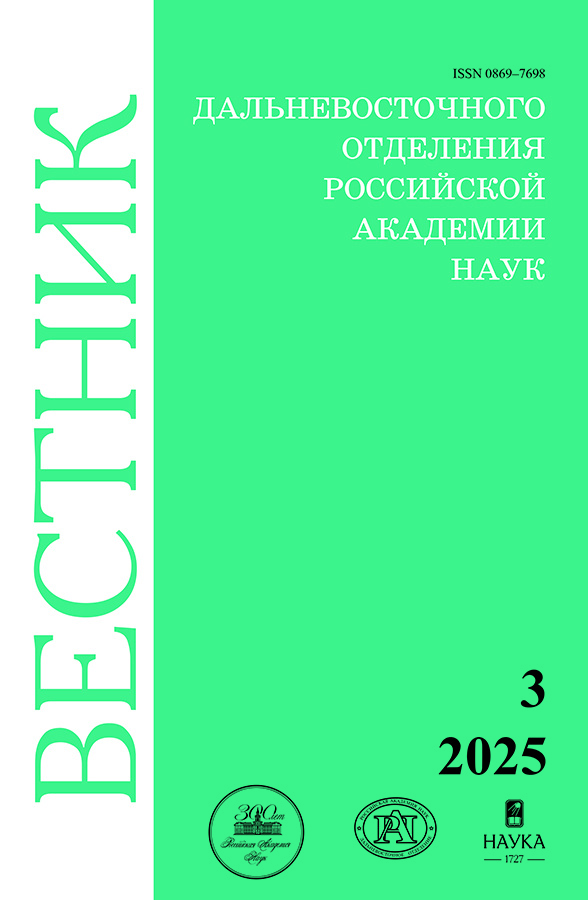Plants low-frequency acoustic response to abiotic stress
- Authors: Kulchin Y.N.1, Shabanov G.A.2, Rybchenko A.А.2, Kozhanov S.О.1, Subbotin E.P.1
-
Affiliations:
- Institute of Automation and Control Processes, FEB RAS
- «Arctica» Scientific and Research Center, FEB RAS
- Issue: No 6 (2024)
- Pages: 18-27
- Section: Biotechnology
- URL: https://permmedjournal.ru/0869-7698/article/view/677439
- DOI: https://doi.org/10.31857/S0869769824060029
- EDN: https://elibrary.ru/HTBZYA
- ID: 677439
Cite item
Full Text
Abstract
In the paper acoustic microvibrations in the range from 0.1 to 27 Hz that occur in the leaves and root system of the Chinese rose plant in response to light irradiation, as well as damage to the leaves in the form of applying the irritating ointment “Linkus” to them. It has been shown that when a plant is irradiated with light, microvibrations arise in the leaf with a frequency of 5.77198 Hz, which presumably can be associated with the process of photosynthesis. When exposed to light, microvibrations were also recorded in the root system with frequencies of 23.61 and 16.35 Hz. Applying irritating ointment “Linkus” to four spatially spaced rose leaves also led to the appearance of characteristic microvibrations in the root system, with each leaf corresponding to its own vibration frequency, which apparently indicates that the rhizome receives information about each leaf and thus, using low-frequency microvibrations, the plant can interact with the external environment.
Keywords
Full Text
About the authors
Yu. N. Kulchin
Institute of Automation and Control Processes, FEB RAS
Author for correspondence.
Email: kulchin@iacp.dvo.ru
ORCID iD: 0000-0002-8750-4775
Academician of RAS, Doctor of Sciences in Physics and Mathematics
Russian Federation, VladivostokG. A. Shabanov
«Arctica» Scientific and Research Center, FEB RAS
Email: neurokib@mail.ru
ORCID iD: 0000-0002-7349-5724
Candidate of Sciences in Biology, Associate Professor, Leading Researcher
Russian Federation, MagadanA. А. Rybchenko
«Arctica» Scientific and Research Center, FEB RAS
Email: neurokib@mail.ru
ORCID iD: 0000-0003-4688-1491
Doctor of Sciences in Technique, Professor, Chief Researcher
Russian Federation, MagadanS. О. Kozhanov
Institute of Automation and Control Processes, FEB RAS
Email: kozhanov_57@mail.ru
ORCID iD: 0009-0001-2629-3521
Junior Researcher
Russian Federation, VladivostokE. P. Subbotin
Institute of Automation and Control Processes, FEB RAS
Email: s.e.p@list.ru
ORCID iD: 0000-0002-8658-3504
Candidate of Sciences in Physics and Mathematics, Leading Researcher
Russian Federation, VladivostokReferences
- Son J.S., Jang S., Mathevon N., Ryu C.M. Is plant acoustic communication fact or fiction? New Phytologist. 2024;242(5):1876–1880.
- Appel H.M., Cocroft R.B. Plants respond to leaf vibrations caused by insect herbivore chewing. Oecologia. 2014;175(4):1257–1266.
- Pinto C.F. et al. Chemical responses of Nicotiana tabacum (Solanaceae) induced by vibrational signals of a generalist herbivore. Journal of Chemical Ecology. 2019;45:708–714.
- De Luca P.A., Vallejo-Marín M. What’s the ‘buzz’about? The ecology and evolutionary significance of buzz-pollination. Current Opinion in Plant Biology. 2013;16(4):429–435.
- Veits M. et al. Flowers respond to pollinator sound within minutes by increasing nectar sugar concentration. Ecology Letters. 2019;22(9):1483–1492.
- Schöner M.G. et al. Bats are acoustically attracted to mutualistic carnivorous plants. Current Biology. 2015;25(14):1911–1916.
- Rodrigo-Moreno Ana et al. Root phonotropism: early signalling events following sound perception in Arabidopsis roots. Plant Science. 2017;264:9–15.
- Gagliano Monica, Stefano Mancuso, Daniel Robert. Towards understanding plant bioacoustics. Trends in Plant Science. 2012;17(6):323–325.
- Gagliano Monica et al. Tuned in: plant roots use sound to locate water. Oecologia. 2017;184(1):151–160.
- Khait Itzhak et al. Sound perception in plants. In: Seminars in cell & developmental biology. Academic Press; 2019. Vol. 92.
- Kafash Zohreh Haghighi et al. Traffic noise induces oxidative stress and phytohormone imbalance in two urban plant species. Basic and Applied Ecology. 2022;60:1–12.
- Jiang Shiren et al. Effects of sonic waves at different frequencies on propagation of Chlorella pyrenoidosa. Agricultural Science & Technology. 2012;13(10):2197.
- Cai Weiming et al. Audible sound treatment of the microalgae Picochlorum oklahomensis for enhancing biomass productivity. Bioresource Technology. 2016;202:226–230.
- Christwardana M., Hadiyanto H. The effects of audible sound for enhancing the growth rate of microalgae Haematococcus pluvialis in vegetative stage. HAYATI Journal of Biosciences. 2017;24(3):149–155.
- Hassanien Reda HE et al. Advances in effects of sound waves on plants. Journal of Integrative Agriculture. 2014;13(2):335–348.
- Qi Lirong et al. Influence of sound wave stimulation on the growth of strawberry in sunlight greenhouse. In: Computer and Computing Technologies in Agriculture III: Third IFIP TC 12 International Conference, CCTA 2009, Beijing, China, October 14–17, 2009, Revised Selected Papers 3. Berlin Heidelberg: Springer; 2010.
- Choi B. et al. Positive regulatory role of sound vibration treatment in Arabidopsis thaliana against Botrytis cinerea infection. Scientific Reports. 2017;7(1):2527.
- Jung J. et al. Sound vibration-triggered epigenetic modulation induces plant root immunity against Ralstonia solanacearum. Frontiers in Microbiology. 2020;11:1978.
- Gagliano M. et al. Out of sight but not out of mind: alternative means of communication in plants. PloS One. 2012;7(5). e37382.
- Khait I. et al. Sounds emitted by plants under stress are airborne and informative. Cell. 2023;186(7):1328–1336. e10.
- Hamant O., Haswell E.S. Life behind the wall: sensing mechanical cues in plants. BMC Biology. 2017;15:1–9.
- Patent na poleznuyu model’ № 202454 Rossiiskaya Federatsiya, MPK51 A61V 5/0476(2020.08) Registrator spektra mikrovibratsii golovnogo mozga. Shabanov G.A., Rybchenko A.A., Lebedev Yu.A., Zubkov I.A. / NITS “Arktika” DVO RAN (RU), Zayavka № 2020125873; Prioritet 04.08.2020; opubl. 18.02.2021. Byul. N 5. (In Russ.).
- Shabanov G.A., Rybchenko А.А., Lebedev Yu.A., Lugovaya Е.А. Register of the human brain acoustic area spectrum. Biomedicine Radioengineering. 2021;24(3):28–36. doi: 10.18127/j15604136-202103-03. (In Russ.).
Supplementary files










